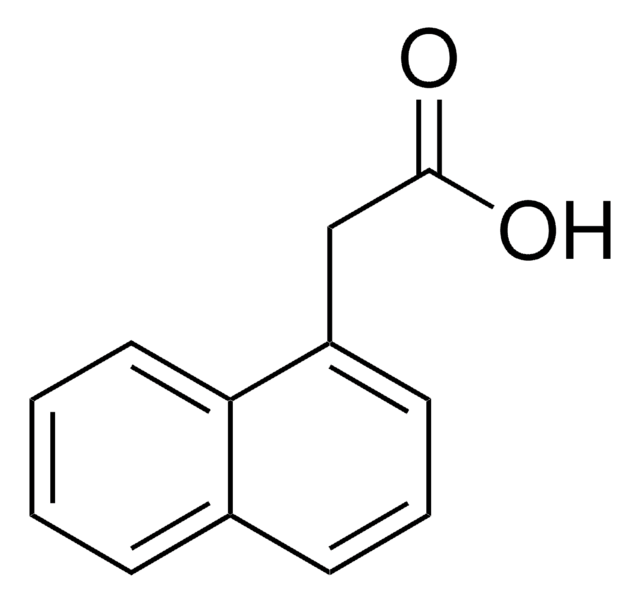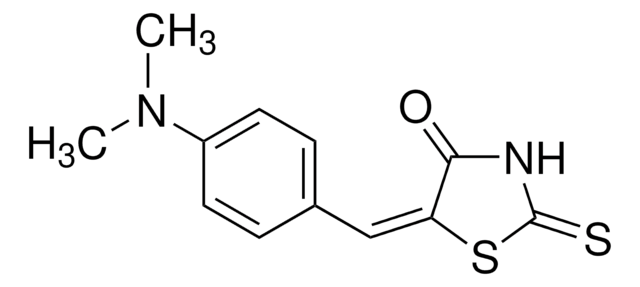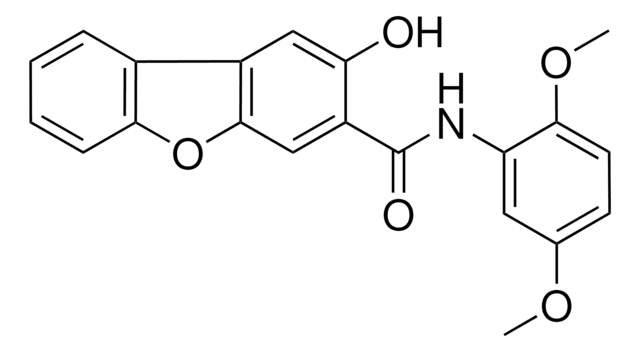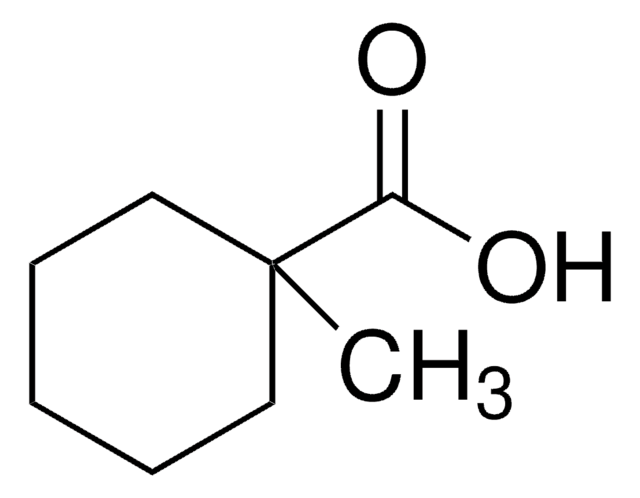70340
Naphthenic acid
technical
Sinónimos:
Acidol (petroleum by-product), Sunaptic B
Iniciar sesiónpara Ver la Fijación de precios por contrato y de la organización
About This Item
Productos recomendados
grado
technical
Nivel de calidad
Formulario
liquid
valor de ácido
~215
densidad
0.92 g/mL at 20 °C (lit.)
cadena SMILES
OC(=O)CCC1CC(CC1)CC
InChI
1S/C10H18O2/c1-2-8-3-4-9(7-8)5-6-10(11)12/h8-9H,2-7H2,1H3,(H,11,12)
Clave InChI
WVRFSLWCFASCIS-UHFFFAOYSA-N
Categorías relacionadas
Aplicación
Naphthenic acid is commonly used in the synthesis of useful metal naphthenates such as copper naphthenate, a wood preservative; titanium naphthenate, a precursor for the preparation of titanium oxide thin films and a rare earth naphthenate, a lubricant oil additive. It can also be in the synthesis of biodegradable naphthenic acid ionic liquids.
Nota de análisis
petroleum product, techn. mixture of alkylated cyclopentane carboxic acids
Palabra de señalización
Warning
Frases de peligro
Consejos de prudencia
Clasificaciones de peligro
Eye Irrit. 2 - Skin Irrit. 2 - Skin Sens. 1
Código de clase de almacenamiento
10 - Combustible liquids
Clase de riesgo para el agua (WGK)
WGK 1
Punto de inflamabilidad (°F)
213.8 °F - closed cup
Punto de inflamabilidad (°C)
101 °C - closed cup
Equipo de protección personal
Eyeshields, Gloves, type ABEK (EN14387) respirator filter
Elija entre una de las versiones más recientes:
¿Ya tiene este producto?
Encuentre la documentación para los productos que ha comprado recientemente en la Biblioteca de documentos.
Los clientes también vieron
David Jones et al.
Journal of chromatography. A, 1247, 171-175 (2012-06-19)
The naphthenic acids of oil sands process-affected water (OSPW) are said to be important toxicants. The major acids are stated to have alicyclic structures and recently, numerous of these have been identified, but some evidence suggests 'aromatic' acids are also
Steven D Melvin et al.
Environmental pollution (Barking, Essex : 1987), 167, 178-183 (2012-05-12)
Naphthenic acids (NA) have been identified as harmful environmental contaminants that influence survival, growth and development of wildlife. Amphibian larvae are particularly susceptible to waterborne contaminants, but little information exists regarding exposure of amphibian embryos or tadpoles to NA. Our
Lan Liu et al.
Chemistry (Weinheim an der Bergstrasse, Germany), 18(38), 12059-12067 (2012-08-16)
The interactions between 3-O-methyl-mannose polysaccharides (MMPs), extracted from Mycobacterium smegmatis (consisting of a mixture of MMP-10, -11, -12 and -13) or obtained by chemical synthesis (MMP-5(s), -8(s), -11(s) and -14(s)), and linear saturated and unsaturated fatty acids (FAs), and a
Atefeh Afzal et al.
Environmental science & technology, 46(19), 10727-10734 (2012-09-01)
The large volume of oil sands process-affected water (OSPW) produced by the oil sands industry in Northern Alberta, Canada, is an environmental concern. The toxicity of OSPW has been attributed to a complex mixture of naturally occurring acids, including naphthenic
Effects of naphthenic acid exposure on development and liver metabolic processes in anuran tadpoles.
Steven D Melvin et al.
Environmental pollution (Barking, Essex : 1987), 177, 22-27 (2013-03-08)
Naphthenic acids (NA) are used in a variety of commercial and industrial applications, and are primary toxic components of oil sands wastewater. We investigated developmental and metabolic responses of tadpoles exposed to sub-lethal concentrations of a commercial NA blend throughout
Nuestro equipo de científicos tiene experiencia en todas las áreas de investigación: Ciencias de la vida, Ciencia de los materiales, Síntesis química, Cromatografía, Analítica y muchas otras.
Póngase en contacto con el Servicio técnico










